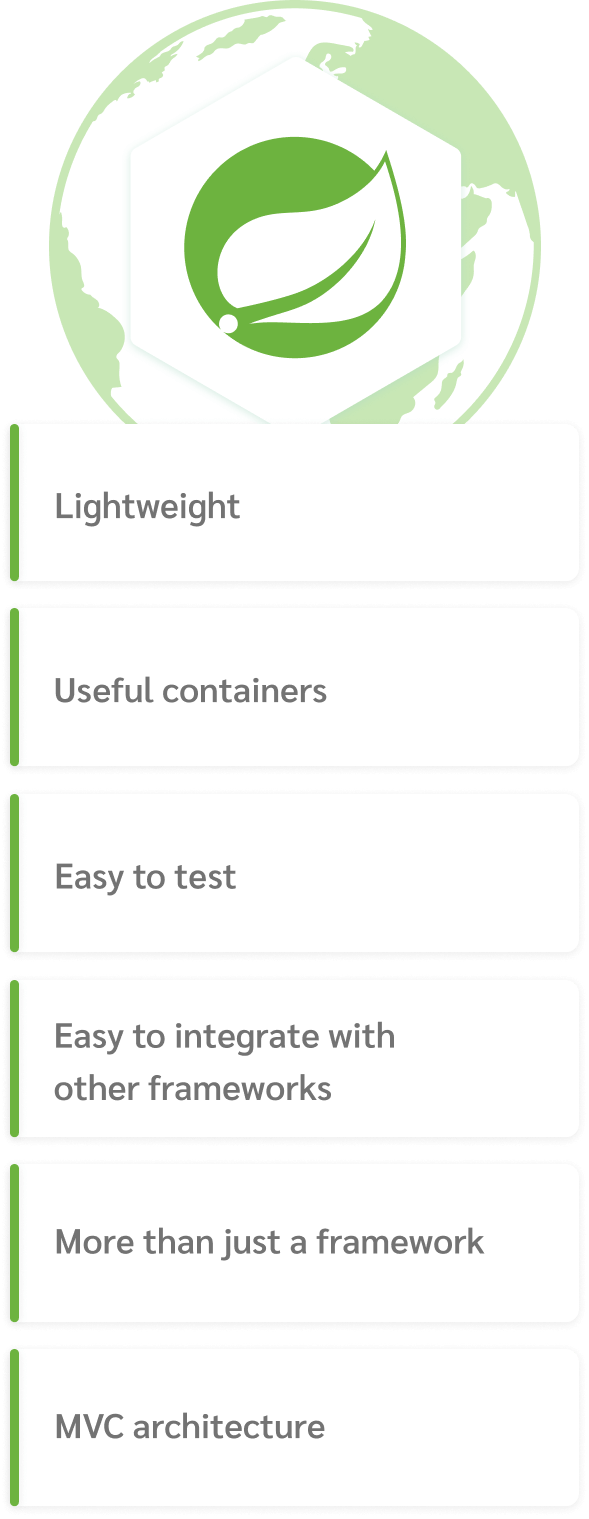Everything You Need to Know About Spring Web Development
Spring is a free and open-source development framework for Java. The purpose of Spring is to make it quicker and easier for developers to build Java enterprise applications.
It does by streamlining several aspects of the Spring web development process, such as taking a modular approach to design – letting developers freely pick and choose only the packages and classes they need – and using MVC (Model-View-Controller) architecture, which allows developers to split the data they work with into individual components and modify different aspects of the data at their own pace.
On top of this, Spring takes inspiration from several other existing technologies, like Quartz, ORM frameworks and JDK timers, so it’s compatible with virtually any other technology you use in your project. As a result, you will enjoy a higher level of creative freedom, resulting in a more visually appealing, practical, and original Java application – one that will certainly impress your users.
Read on to discover what makes Spring web application development so special, and how it can help take your Java application to the next level.

How exactly does Spring work?

Spring serves as an extension of the Java platform. So you can use it in conjunction with other technologies to power your application. What Spring does is make it easier to perform the tasks that you would typically do in Java but in a faster and more efficient manner. There are several ways that Spring achieves this outcome.
First off, Spring uses a type of Inversion of Control (IoC) known as Dependency Injection (DI). What’s an IoC? A design principle where you let a framework take control of the execution flow of your program. This makes it easier to test your code, while enabling you to modify and replace components without requiring recompilation.
Secondly, Spring uses another key component known as the Aspect Oriented Programming (AOP) framework. AOP is a programming style used to define certain policies which in turn are used to define and manage cross-cutting concerns (parts of a program that either rely on or must affect many other parts of the system in order for the program to work) in an application.
When used correctly, AOP programming helps establish clear guidelines and boundaries in which cross-cutting concerns can take place, so as to prevent the risk of bugs and programming errors during Spring web development.
Last, but not least, Spring features a range of built-in modules. These range from Data Access and Integration modules through to Core Containers and Web MVCs. Developers can use as little or as much of these modules as they wish based on their application requirements.
Modules like the Core module contain vital components used for IoC and Dependency Injection features, while the Web layer consists of the Web, Web-MVC, Web-Socket, and Web-Portlet modules. Features like the Web Socket allow for two-way communication between the client and server in a web application.
Benefits of the Spring Framework

Lightweight
As a modular framework, Spring lets you use as little or as much of its features as you wish. This gives developers greatly flexibility, while ensuring that applications are neither CPU nor RAM intensive on lower-end systems.
Useful containers
The Spring container is the executable that contains everything your application needs to run. It provides excellent support for IoC and Dependency Injection results. And it supports the Java Database Connectivity (JDBC) framework to improve productivity and reduce errors.
Easy to test
Spring provides excellent support for integration testing. This enables developers to test their application in a variety of environments, which gives them an honest and realistic understanding of how the application will perform under certain conditions. As a result, developers can fine-tune their applications to be compatible with a wider range of systems and devices, with the confidence that it will be compatible.
Easy to integrate with other frameworks
Whether you’re starting a new project from scratch, or revisiting an existing project, Spring development can be used with many other Java frameworks. This is especially useful for complex, large-scale enterprise-level applications.
More than just a framework
Since launching in 2003, the Spring framework has evolved to include an entire family of products and solutions, including Spring Cloud, Spring Data, Spring Integration, and heaps more. This greatly enhances the design possibilities of your Java application, especially when you work with a company that is familiar with the entire Spring catalogue.
MVC architecture
By using the MVC (Model-View-Controller) architecture this greatly speeds up the Spring web development process, as it means that an entire team of developers can each work on different aspects of the same project. For example, one developer works on the view, while another works on the controller. Combined, their resources can be effectively used to streamline the development cycle and complete the project sooner.
Contact Orient Software today

Looking to partner with a reliable and trustworthy IT partner? Orient Software has over a decade of experience providing outsourced Spring development services to global clients. Contact us today, and see what our 315+ team of developers can do for you.
